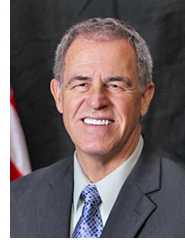
Outline of ITD's enhanced emergency program
to be featured in special TRB publication
ITD realignment in 2011 provided an opportunity to strengthen the department’s commitment to emergency preparation and response. Changes in reporting responsibilities moved ITD’s emergency program manager under Chief Deputy Scott Stokes.
It also led to establishing a department-wide team that takes advantage of individual strengths, experience and training, guided by duty officers who stand ready to respond in the event of an emergency.
The Transportation Research Board will feature ITD’s new approach to emergency management as a national model in a special publication this fall. “Planning for the Worst, Teaming with the Best,” by Bryan D. Smith, ITD’s emergency program manager, explains the new emphasis and how it will be implemented when disaster strikes.
He created a new emergency program organizational chart that incorporates duty officers who rotate on-call duties to serve when he is unavailable. They also will be responsible for functions and employees operating under them during a disaster.
The concept enables ITD to broaden emergency response capabilities without hiring additional staff and to take advantage of a wide range of expertise, from finance to planning, logistics and equipment.
It enables ITD emergency response to expand or contract according to the demands of an event – to become as large as necessary (but no larger than required), and to scale back when it subsides.
“To support, sustain, and maintain an emergency program today requires a staffing system that is not only adaptable, but taps into properly trained personnel, so that the department can have the appropriate expertise, authority, and critical thinking to respond in a disaster or large emergency … a system that assembles the best team possible.”
ITD built that support team by pooling expertise structurally and operationally, Smith explains.
He used a devastating landslide near Bonners Ferry in 1998 as an example of the need to rethink emergency response. The slide was 500 feet wide, involved an estimated 400,000 cubic yards of material, undermined U.S. 95, severed the state’s major north-south route and buried a major Seattle-to-Chicago rail line.
“The event may be unique, but most state DOT (departments of transportation) emergency managers have a similar story; the event was a determining factor in ITD’s taking deliberate measures to reorganize its approach to major disasters,” Smith wrote.
Published 9-6-13